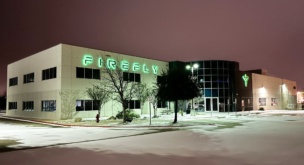NASA has chosen Steven Sinacore to lead the small team of NASA engineers standing up the fast-moving commercial program to put a nuclear reactor on the Moon in the next five years, an agency spokesperson told Payload.
Sinacore, currently the director of aeronautics at NASA’s Glenn Research Center, was previously the deputy program manager for the power and propulsion element of the agency’s Gateway lunar station.
Get moving: Two weeks ago, NASA acting administrator Sean Duffy tasked the agency with hiring two companies to develop lunar nuclear reactors in a stripped-down, public-private partnership for fission surface power (FSP). Sinacore’s first job is authoring an RFI expected to be released before November.
“To get this done in the desired time frame, they will require outstanding program leadership, a close partnership with the DOE, and excellent industry partners that are strongly motivated to accomplish the goal by the right contract and milestone structure,” Roger Myers, a former NASA and Aerojet Rocketdyne advanced propulsion engineer, told Payload before Sinacore’s selection.
The agency’s previous effort targeted a 40kW reactor, but now it is asking companies to scale up to 100kW, a target that emerged from plans for commercial in-situ resource utilization schemes.
The beginning is a delicate time: “Delivering a system of this scale purely through commercial means could be tough,” Bhavya Lal, a former NASA associate administrator and current space nuclear advocate, told Payload.
The project will need significant funding, Lal said. It would be on the order of $3B over five years, alongside technical assistance from NASA centers and DOE National Labs, where the nation’s nuclear expertise resides. “Without that scale of resourcing and integration, it is likely to prove extremely challenging to achieve a launch by 2030,” she predicted.
Clear the path: Part of the challenge is the huge amount of infrastructure and regulatory assistance that will be needed, according to a recent report from Lal and Myers:
- Existing US supplies of enriched uranium may not be sufficient to support even one full-scale reactor program.
- Most test facilities, including thermal vacuum chambers and post-irradiation evaluation labs, “are either at capacity, not nuclear-rated, or inaccessible to commercial teams,” the report said.
- Launch sites aren’t ready for nuclear payload handling and integration.
There’s also a work to be done on the regulatory front at the FAA’s Office of Commercial Space Transportation—which might be one benefit of Duffy’s complex dual role as acting NASA administrator and Secretary of Transportation.
Vision statement: While FSP is a nuclear reactor for the Moon, it’s really a nuclear reactor for space, Lal says, with the potential to transform how science is done in the solar system.



